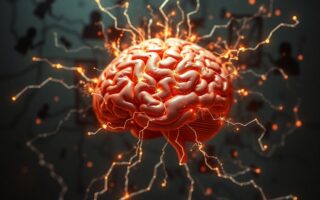Exploring the Relationship Between PTSD and Anxiety Disorders
Post-Traumatic Stress Disorder (PTSD) is a complex and debilitating mental health condition that can have profound effects on an individual’s life. While PTSD shares some similarities with anxiety disorders, it is classified as a distinct diagnostic category in the Diagnostic and Statistical Manual of Mental Disorders (DSM-5). However, the relationship between PTSD and anxiety disorders is intricate, as PTSD often involves significant anxiety symptoms.
Understanding Post-Traumatic Stress Disorder (PTSD)
PTSD is a mental health condition that can develop after exposure to a traumatic event or series of events. These events may involve experiencing or witnessing actual or threatened death, serious injury, or sexual violence. PTSD symptoms typically fall into four main clusters:
- Intrusive Memories: Individuals with PTSD may experience recurrent, distressing memories, flashbacks, or nightmares related to the traumatic event.
- Avoidance: PTSD often involves efforts to avoid reminders of the traumatic event, including places, people, thoughts, or feelings associated with the trauma.
- Negative Changes in Thinking and Mood: PTSD can lead to negative changes in beliefs about oneself or others, persistent negative emotions, feelings of detachment, or loss of interest in previously enjoyed activities.
- Arousal and Reactivity: Individuals with PTSD may experience heightened arousal, including hypervigilance, irritability, difficulty concentrating, and exaggerated startle response.
Is PTSD an Anxiety Disorder?
While PTSD shares some symptomatology with anxiety disorders, it is classified as a separate diagnostic category in the DSM-5. However, PTSD often involves significant anxiety symptoms, including hypervigilance, irritability, and exaggerated startle response. Additionally, individuals with PTSD may experience comorbid anxiety disorders, such as generalized anxiety disorder or panic disorder, further complicating the clinical picture.
Differentiating PTSD from Anxiety Disorders
PTSD is distinguished from anxiety disorders by its association with exposure to a traumatic event or events. While anxiety disorders may also involve excessive fear and worry, they are not necessarily linked to a specific traumatic experience. Additionally, the symptoms of PTSD are often more severe and intrusive than those of anxiety disorders, particularly when triggered by reminders of the traumatic event.
Treatment of PTSD and Anxiety Disorders
The treatment of PTSD typically involves a combination of psychotherapy, medication, and supportive interventions. Evidence-based therapies for PTSD include Cognitive Processing Therapy (CPT), Prolonged Exposure (PE) therapy, Eye Movement Desensitization and Reprocessing (EMDR), and trauma-focused cognitive-behavioral therapy (CBT). Medications such as selective serotonin reuptake inhibitors (SSRIs) and serotonin-norepinephrine reuptake inhibitors (SNRIs) may also be prescribed to alleviate symptoms of PTSD.
Conclusion
While PTSD shares some similarities with anxiety disorders, it is classified as a distinct diagnostic category characterized by exposure to a traumatic event or series of events. However, PTSD often involves significant anxiety symptoms, and individuals with PTSD may experience comorbid anxiety disorders. Understanding the relationship between PTSD and anxiety disorders is essential for accurate diagnosis and effective treatment planning.













